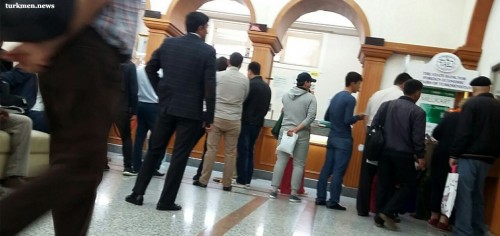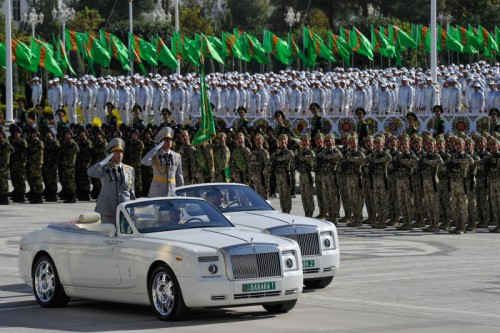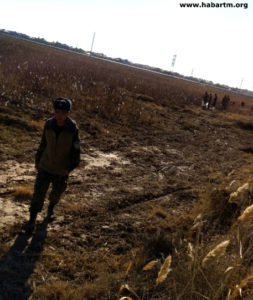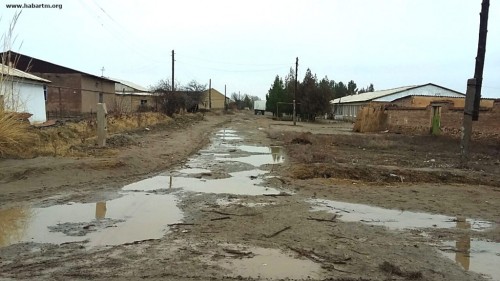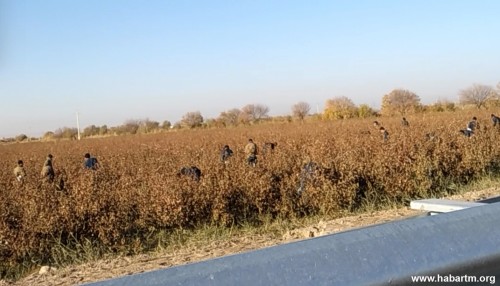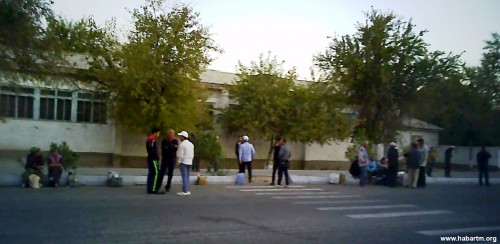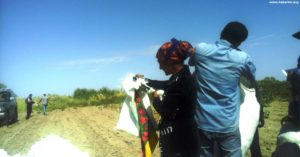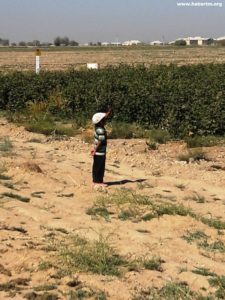Countries
Solidarity campaigns
13 August 2024
Georgia: Support striking workers at Evolution Gaming
5 June 2023
Georgia: Justice for Wolt couriers
10 May 2023
Belarus: Trade union activity is not extremism!
2 November 2019
Kazakhstan: Trade unionist Erlan Baltabay imprisoned - again!
19 November 2018
Kazakhstan: Stop repression and physical attacks on leaders of independent unions; hands off Larisa Kharkova, Erlan Baltabai and Dmitriy Senyavskiy
18 April 2018
MALOKHAT STILL NEEDS YOUR HELP
News
22 June, 2019 / turkmenistan
Turkmenistan Remains at Lowest Possible Ranking in US Trafficking in Persons Report
For the fourth year in a row, the Government of Turkmenistan failed to meet the minimum standards to address human trafficking outlined in the 2019 US Trafficking in Persons (TIP) report, resulting in a Tier 3 ranking – the lowest possible ranking.
08 June, 2019 / turkmenistan
Turkmen Struggle to Access their Money as Economic Crisis Bites
It claims to be the Motherland of Prosperity but Turkmenistan’s economy is in chaos and its financial system isn’t working. Many Turkmen begin their day not with a cup of coffee or journey to work, but with a trip to the shops at 6 a.m. to buy a kilo of sugar, as it may disappear from the shelves later, or to stand in line outside the bank.
29 May, 2019 / turkmenistan
The World’s Worst Country for Journalists
Last month the Central Asian nation of Turkmenistan overtook North Korea to become most repressive media environment in the world, according to the Reporters Without Borders annual Press Freedom Index. The media watchdog described the Central Asian nation as a news “black hole” where all media is controlled by the government and where the few independent journalists working for foreign-based news sites have been harassed, arrested, and tortured. Just 15 percent of the country can get online, and even then the version of the internet they have access to is highly censored.
17 March, 2019 / turkmenistan
Independent Journalists Under Pressure in Turkmenistan
The few independent journalists living in Turkmenistan are coming under continuing pressure from the country’s special services. On March 11 Soltan Achilova was detained at passport control at Ashgabat airport and told she does not have the right to leave the country, Chronicles of Turkmenistan reported. The journalist was flying via Istanbul to Tbilisi to take part in a seminar
30 January, 2019 / turkmenistan
Turkmen Cotton Harvest Still Relies on Forced Labor – 2018 Campaign Review
The production and harvesting of cotton in Turkmenistan remains heavily reliant on a system of forced labor despite the use of mechanical cotton harvesters on some farms and attempts by local authorities to prevent the use of child labor in the cotton fields. Farmers put the problem down to the rigidly centralized agricultural system. It’s the government that tells the farmers what to grow; it’s the government that provides seeds, fertilizers and other supplies. The state even sets dates for the start and finish of the cotton harvest, instead of allowing farmers to decide for themselves when the crop is actually ready.
30 January, 2019 / turkmenistan
Hundreds of Villages Untouched by Turkmenistan’s Rural Development Program
A rural development program has been in effect in Turkmenistan since 2007. The state media have given it a variety of names over the past 12 years: “the regional development program,” “the village reform program” and simply “the reform program.” It’s not in the public domain but is often referred to in the media and appears extremely significant from the volume of investment alone.
04 December, 2018 / turkmenistan
Soldiers finish cotton harvest in Turkmenistan
Conscripts have been harvesting the last of the cotton in at least two regions in Turkmenistan, as low pay and freezing weather put off hired laborers.Conscripts were sent to pick cotton in several districts in the southeast Mary region at the end of November. They wore military uniform and travelled to the fields in army Ural and Kamaz trucks.
16 November, 2018 / turkmenistan
Cotton pickers struggle with low pay, poor crop in southern Turkmenistan
Harvesting by hand remains the norm in the cotton fields of Turkmenistan’s southern Mary region. Despite reports in the state-run media of the widespread use of cotton harvesters, observers for Alternative Turkmenistan News failed to find any evidence of the machines out in the fields. Instead, the observers estimate that some 5,600 public sector workers – teachers, doctors, cleaners and others – are forced to go cotton picking every day in the region. In addition, many workers are taken cotton picking for extended periods of 10 days or a month.
10 November, 2018 / turkmenistan
Forced labor remains the norm in Turkmenistan’s cotton fields
Thousands of people in Turkmenistan are again being forced to pick cotton. The autumn harvest began, however, on a positive note, with the authorities taking steps to ensure that classes of schoolchildren are not sent to the fields. Some cotton pickers in the remote north of the country even received increased rates for their work early in the season, but this soon came to an end when forced laborers were brought in
29 October, 2018 / turkmenistan

